Are you considering getting a Bloodhound as a pet? If so, you are in for a loyal and loving companion. Bloodhounds are known for their exceptional sense of smell and their ability to track scents for miles. They are also known for their affectionate and gentle nature, making them a great addition to any family. However, before you make the decision to bring a Bloodhound into your home, it’s important to understand their unique characteristics and needs to ensure that you can provide them with the care and attention they require.
Breed Category: Hound
Country of Origin: Belgium, France, United Kingdom
Average Size:58-69 cm (at the shoulder)
Average Weight:36-50 kg
Average Life Span: 8-10 years
Grooming Requirements: Moderate
Exercise Requirements:High
History and Origin
The Bloodhound is a large breed of dog that is known for its incredible sense of smell. This breed has been used for centuries for tracking and hunting purposes, and its origins can be traced back to ancient times. The Bloodhound is believed to have originated in Belgium, where it was used for hunting deer and wild boar. However, the breed was later developed in England, where it became popular among hunters and law enforcement agencies.
The Bloodhound is a descendant of the St. Hubert Hound, which was a breed of dog that was used for hunting in medieval times. The St. Hubert Hound was known for its keen sense of smell and was used to track down game in the forests of Europe. The Bloodhound was developed by breeding the St. Hubert Hound with other breeds of dogs, such as the Talbot Hound and the Southern Hound. This resulted in a breed of dog that was larger and more powerful than its ancestors, with an even stronger sense of smell.
The Bloodhound was first introduced to England in the 11th century, where it quickly became popular among hunters. The breed was used to track down deer, wild boar, and other game, and was known for its ability to follow a scent for miles. The Bloodhound was also used by law enforcement agencies to track down criminals, and was often used in search and rescue operations.
During the Middle Ages, the Bloodhound was considered a royal breed of dog and was often given as a gift to other monarchs. The breed was also used by the nobility for hunting, and was often depicted in paintings and tapestries. The Bloodhound was so highly regarded that it was even mentioned in Shakespeare’s play, “A Midsummer Night’s Dream.”
In the 19th century, the Bloodhound was brought to America, where it was used for hunting and tracking purposes. The breed was also used by the military during World War I, where it was used to track down wounded soldiers on the battlefield. Today, the Bloodhound is still used by law enforcement agencies for tracking criminals, and is also used in search and rescue operations. The breed is also popular among hunters and is often used to track down game.
In conclusion, the Bloodhound is a breed of dog that has a long and rich history. The breed has been used for centuries
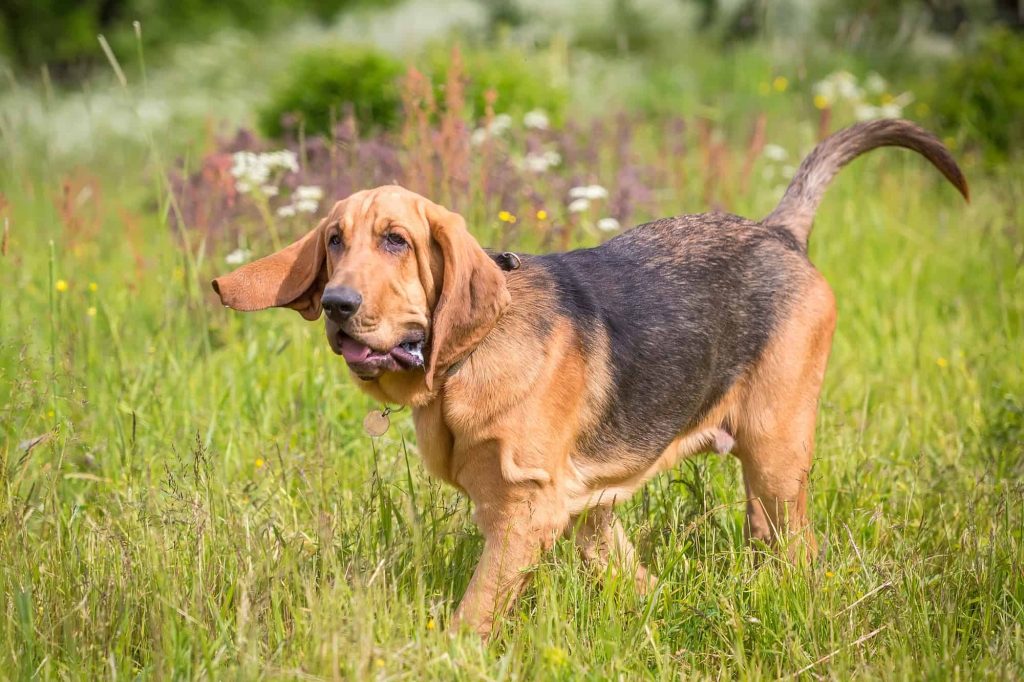
Size and Breed Category
The Bloodhound is a large breed of dog that is known for its exceptional sense of smell. They are classified as a hound breed and are typically used for tracking and hunting. Bloodhounds are known for their long, droopy ears and wrinkled faces, which give them a distinctive appearance. They have a short, dense coat that can come in a variety of colors, including black and tan, liver and tan, and red.
In terms of size, Bloodhounds are considered to be a large breed of dog. They typically weigh between 36-50 kg and stand between 58-69 cm tall at the shoulder. Despite their size, Bloodhounds are known for their gentle and affectionate nature, making them great family pets. However, they do require a lot of exercise and mental stimulation to keep them happy and healthy. Bloodhounds are also known for their stubborn streak, which can make them challenging to train. Overall, the Bloodhound is a unique and fascinating breed of dog that is beloved by many.
Fur Length and Colour
The fur of a Bloodhound is typically short and dense, with a glossy appearance. The fur is usually black and tan, with the black being the dominant colour. The tan colour can range from a light cream to a deep red. The fur on the ears and muzzle is usually softer and shorter than the rest of the body. Bloodhounds also have loose skin around their neck and face, which helps to trap scents and aid in their tracking abilities. The fur on their paws is also thick and dense, providing protection and insulation while tracking through rough terrain.
Bloodhounds can also come in a variety of other colours, including liver and tan, red and tan, and solid liver. The fur on a liver and tan Bloodhound is a deep brown colour, while the red and tan variety has a reddish-brown coat. Solid liver Bloodhounds have a uniform brown coat. Regardless of the colour, the fur on a Bloodhound is always short and dense, with a glossy appearance. The fur is also water-resistant, which helps to protect them while tracking through wet environments. Overall, the fur of a Bloodhound is an important aspect of their physical characteristics, aiding in their tracking abilities and providing protection in various environments.
Termperament and Trainability
Bloodhounds are known for their calm and gentle temperament. They are friendly and affectionate towards their owners and are generally good with children. However, they can be stubborn and independent, which can make training a challenge. Bloodhounds have a strong sense of smell and are often used for tracking and hunting. They are also used in law enforcement to track criminals and missing persons. Due to their strong sense of smell, they can become easily distracted and may need extra patience and persistence during training.
When it comes to trainability, Bloodhounds can be difficult to train due to their independent nature. They have a strong sense of smell and can become easily distracted, which can make it challenging to keep their attention during training sessions. However, with patience and persistence, they can be trained to follow commands and perform tasks. Bloodhounds are often used in search and rescue operations due to their excellent tracking abilities. They are also used in competitive events such as tracking trials and obedience competitions. Overall, Bloodhounds require a firm and consistent training approach to ensure they reach their full potential.
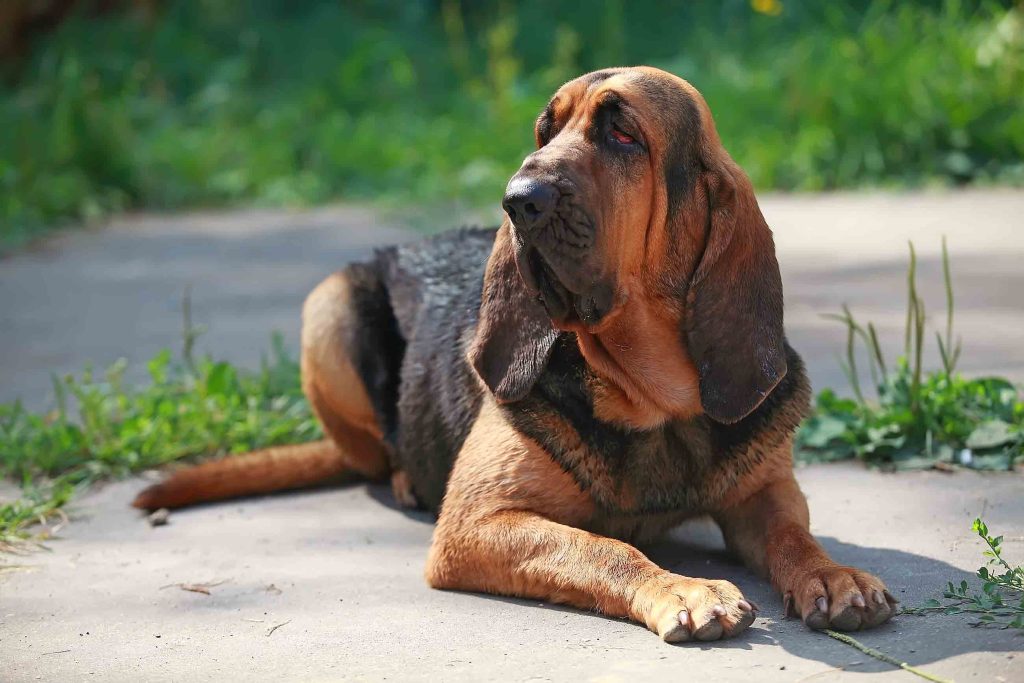
Known Health Conditions
Bloodhounds are known to be prone to certain health conditions. One of the most common issues that affect this breed is hip dysplasia. This condition occurs when the hip joint doesn’t develop properly, leading to arthritis and pain. Bloodhounds are also at risk of developing bloat, a life-threatening condition that occurs when the stomach fills with gas and twists on itself. This can cause a blockage in the blood flow, leading to shock and death if not treated promptly. Additionally, Bloodhounds are prone to ear infections due to their long, floppy ears that trap moisture and dirt. These infections can be painful and lead to hearing loss if left untreated.
Another health condition that Bloodhounds are susceptible to is skin allergies. These allergies can cause itching, redness, and hair loss, and can be triggered by a variety of factors such as food, pollen, or flea bites. Bloodhounds are also at risk of developing eye problems such as entropion, a condition where the eyelid rolls inward, causing irritation and potential damage to the cornea. Lastly, Bloodhounds are prone to obesity, which can lead to a range of health problems such as diabetes, heart disease, and joint pain. It’s important for Bloodhound owners to monitor their dog’s weight and provide them with a healthy diet and regular exercise to prevent obesity-related health issues.
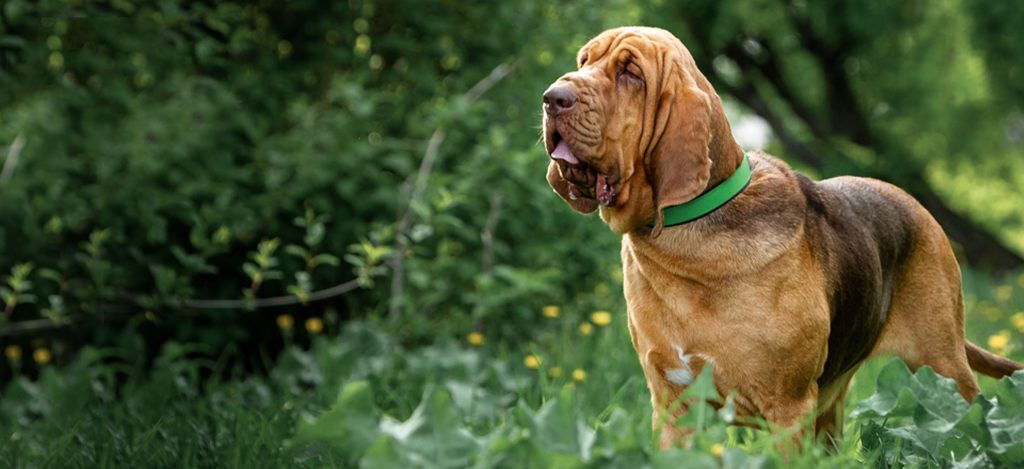
Openness to Strangers
Bloodhounds possess a remarkable openness to strangers, which is a trait that sets them apart from many other dog breeds. They are naturally friendly and sociable, and they tend to approach new people with a wagging tail and a curious expression. Bloodhounds are not known to be aggressive towards strangers, and they are generally quite comfortable around unfamiliar faces. This makes them an excellent choice for families with children or for individuals who enjoy entertaining guests.
In addition to their friendly nature, Bloodhounds are also known for their exceptional sense of smell. They have been used for centuries as tracking dogs, and their ability to follow a scent trail is unparalleled. This makes them an ideal choice for search and rescue operations, as well as for law enforcement agencies. Despite their impressive tracking abilities, Bloodhounds are not typically used as guard dogs, as they are more likely to greet intruders with a wagging tail than with a growl. Overall, the Bloodhound’s openness to strangers and their exceptional sense of smell make them a unique and valuable breed of dog.
Playfulness Level
The Bloodhound is a highly playful breed of dog that loves to engage in various activities. They are known for their high energy levels and their love for playtime. Whether it’s playing fetch, running around in the park, or simply chasing after their owners, Bloodhounds are always up for some fun. They are also highly social animals and love to interact with other dogs and humans alike. This makes them a great choice for families with children or other pets.
One of the most endearing qualities of the Bloodhound is their sense of humor. They are known for their silly antics and their ability to make their owners laugh. They are also highly intelligent animals and love to learn new tricks and commands. This makes them a great choice for owners who are looking for a dog that is both playful and trainable. Overall, the Bloodhound is a highly entertaining breed of dog that is sure to bring joy and laughter to any household.
Suitability as a Pet for Children
Bloodhounds have a great sense of smell and are often used in law enforcement to track down missing persons or criminals. They are also known for their gentle and affectionate nature, making them a suitable pet for children. Bloodhounds require regular exercise and mental stimulation to keep them happy and healthy. They are a loyal breed and enjoy spending time with their family. It is important to note that Bloodhounds can be stubborn and may require patience and consistent training.
Exercise Needs
Bloodhounds are a highly active breed that require a significant amount of exercise to maintain their physical and mental health. As a large breed, they require a minimum of 60 minutes of exercise per day, which can be broken up into two or three shorter walks. Bloodhounds have a strong sense of smell and enjoy using their noses to explore their surroundings, making them well-suited for activities such as tracking and scent work. They also enjoy playing games such as fetch and tug-of-war, which can help to keep them mentally stimulated and physically active. It is important to note that Bloodhounds should not be over-exercised, particularly when they are young, as this can cause damage to their developing bones and joints.
In addition to physical exercise, Bloodhounds also require mental stimulation to prevent boredom and destructive behaviour. Activities such as obedience training, agility, and puzzle toys can help to keep their minds engaged and prevent them from becoming bored. Bloodhounds are intelligent dogs that enjoy learning new things, so training sessions can be a great way to bond with them and provide them with the mental stimulation they need. It is important to provide Bloodhounds with a safe and secure environment to exercise in, as they have a tendency to follow their noses and can easily become distracted by interesting scents. Overall, Bloodhounds require a combination of physical and mental exercise to keep them happy and healthy.
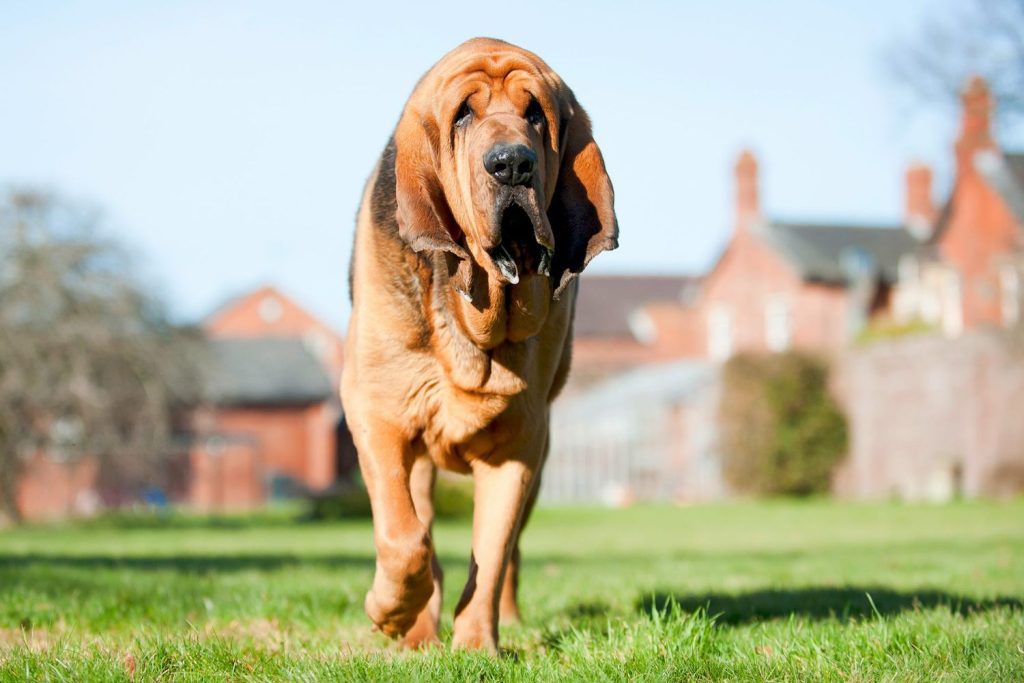
Suitability for a Multi-Pet Family
Bloodhounds have a strong sense of smell and are known for their tracking abilities. They require a lot of exercise and mental stimulation to keep them happy and healthy. When it comes to getting along with other pets, it really depends on the individual dog’s temperament and socialization. Some Bloodhounds may get along well with other pets, while others may be more territorial or aggressive. It’s important to introduce them to other animals slowly and carefully, and to supervise their interactions to ensure everyone stays safe.
Housing Requirements
Bloodhounds require a spacious and comfortable living environment that can accommodate their large size and active nature. A minimum of 10 square meters of indoor space is recommended for a single Bloodhound, with additional outdoor space for exercise and play. The indoor area should be well-ventilated and temperature-controlled, as Bloodhounds are sensitive to extreme temperatures. Soft bedding and toys should be provided to ensure their comfort and mental stimulation. Additionally, Bloodhounds require regular grooming and cleaning to maintain their hygiene and prevent the spread of odors.
Bloodhounds also require a secure and enclosed outdoor area for exercise and play. A minimum of 50 square meters of outdoor space is recommended for a single Bloodhound, with high fencing to prevent escape and ensure their safety. The outdoor area should be free of hazards and obstacles that could cause injury, and should be regularly cleaned and maintained. Bloodhounds are known for their strong sense of smell and may be prone to wandering if they catch a scent, so it is important to ensure that the outdoor area is secure and escape-proof. Regular exercise and playtime in a safe and secure outdoor area is essential for the physical and mental well-being of Bloodhounds.
Summary
Bloodhounds have been bred for their exceptional sense of smell and are often used in law enforcement and search and rescue operations. However, they may not be the most suitable pet for everyone due to their high energy levels and need for regular exercise and mental stimulation. Additionally, their strong sense of smell can lead to them becoming easily distracted and difficult to train. It is important for potential owners to carefully consider their lifestyle and ability to provide for the needs of a Bloodhound before bringing one into their home.
Bloodhound Dog FAQS
Bloodhounds can be stubborn and difficult to train, but with patience and consistency, they can learn basic commands.
Yes, Bloodhounds are known to be gentle and patient with children.
Bloodhounds are prone to hip dysplasia, bloat, and ear infections. Regular vet check-ups are recommended.
Bloodhounds are not recommended for apartment living as they require a lot of space to move around.
Bloodhounds can get along with other pets if socialized properly from a young age.
Yes, Bloodhounds require daily exercise and walks to maintain their health.
Yes, Bloodhounds shed heavily twice a year and require regular grooming to manage their shedding.
Bloodhounds only need to be bathed every 2-3 months unless they get into something particularly dirty. Over-bathing can dry out their skin.
Bloodhounds can grow up to 68-72 cm in height.
The average weight of a Bloodhound is between 36-50 kg.
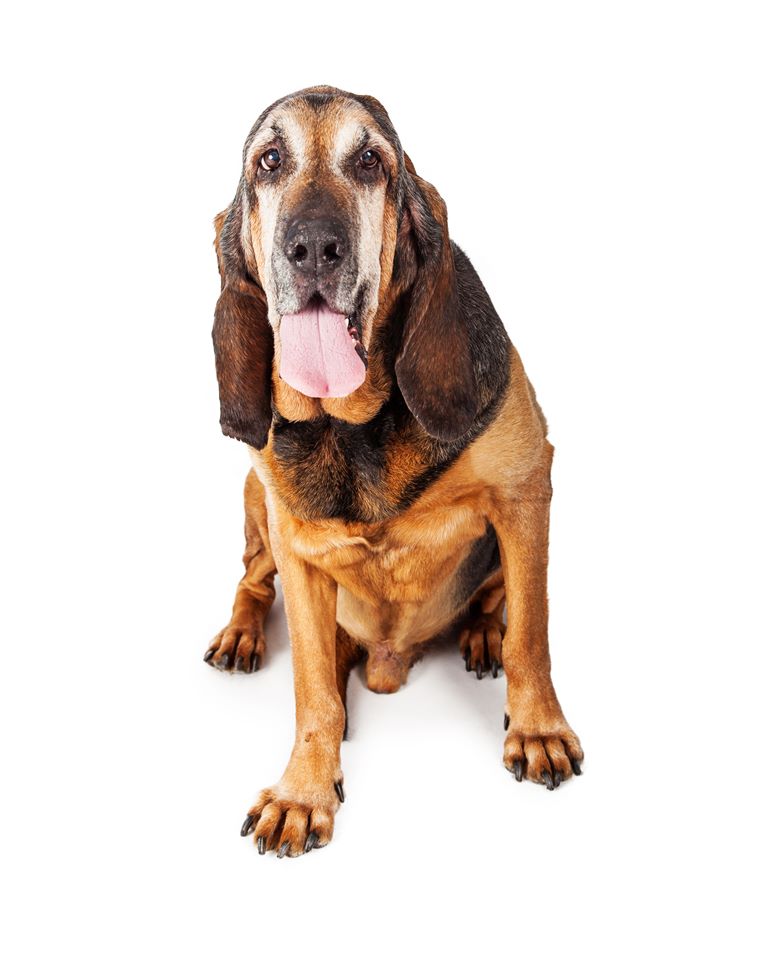
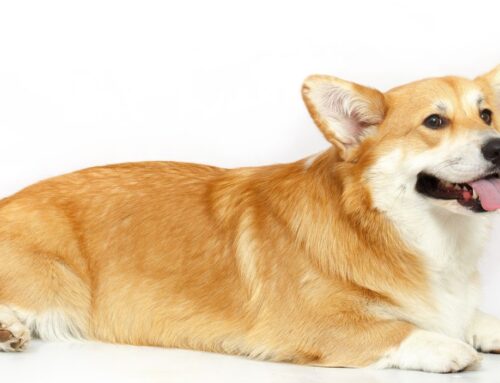

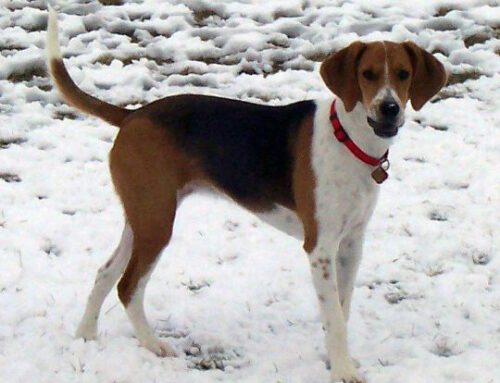
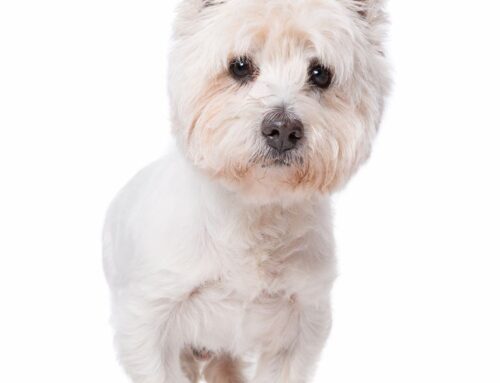

Leave A Comment